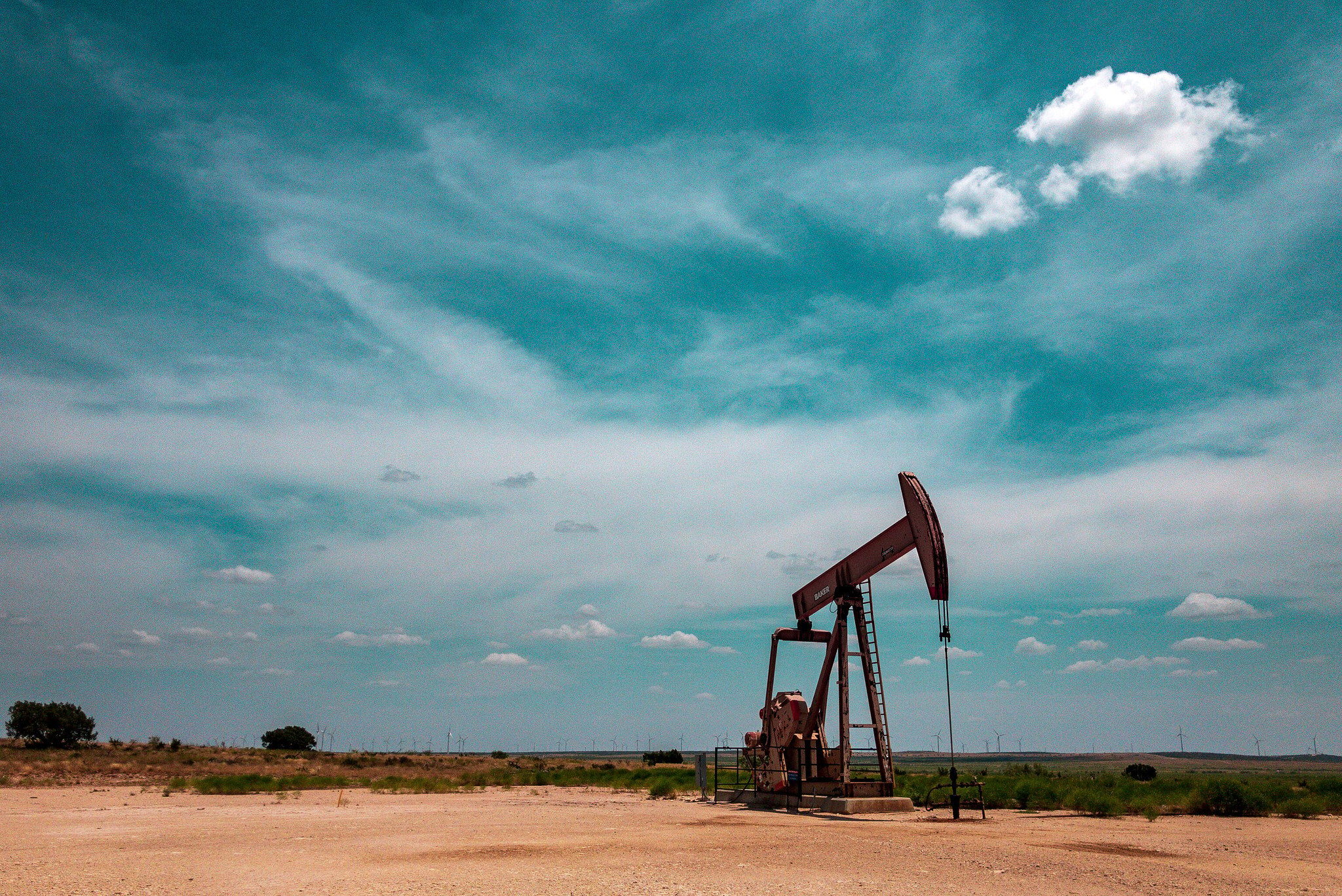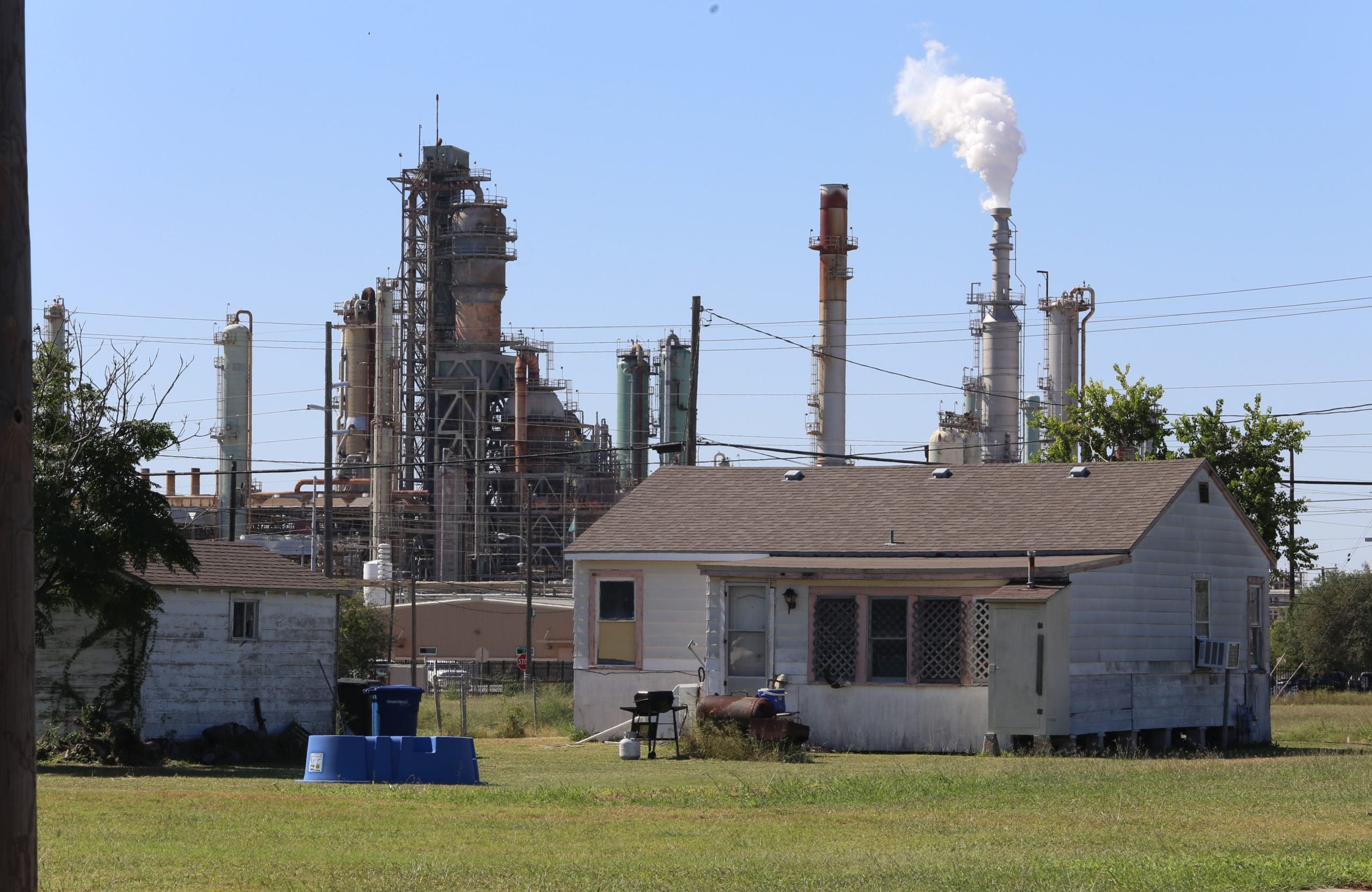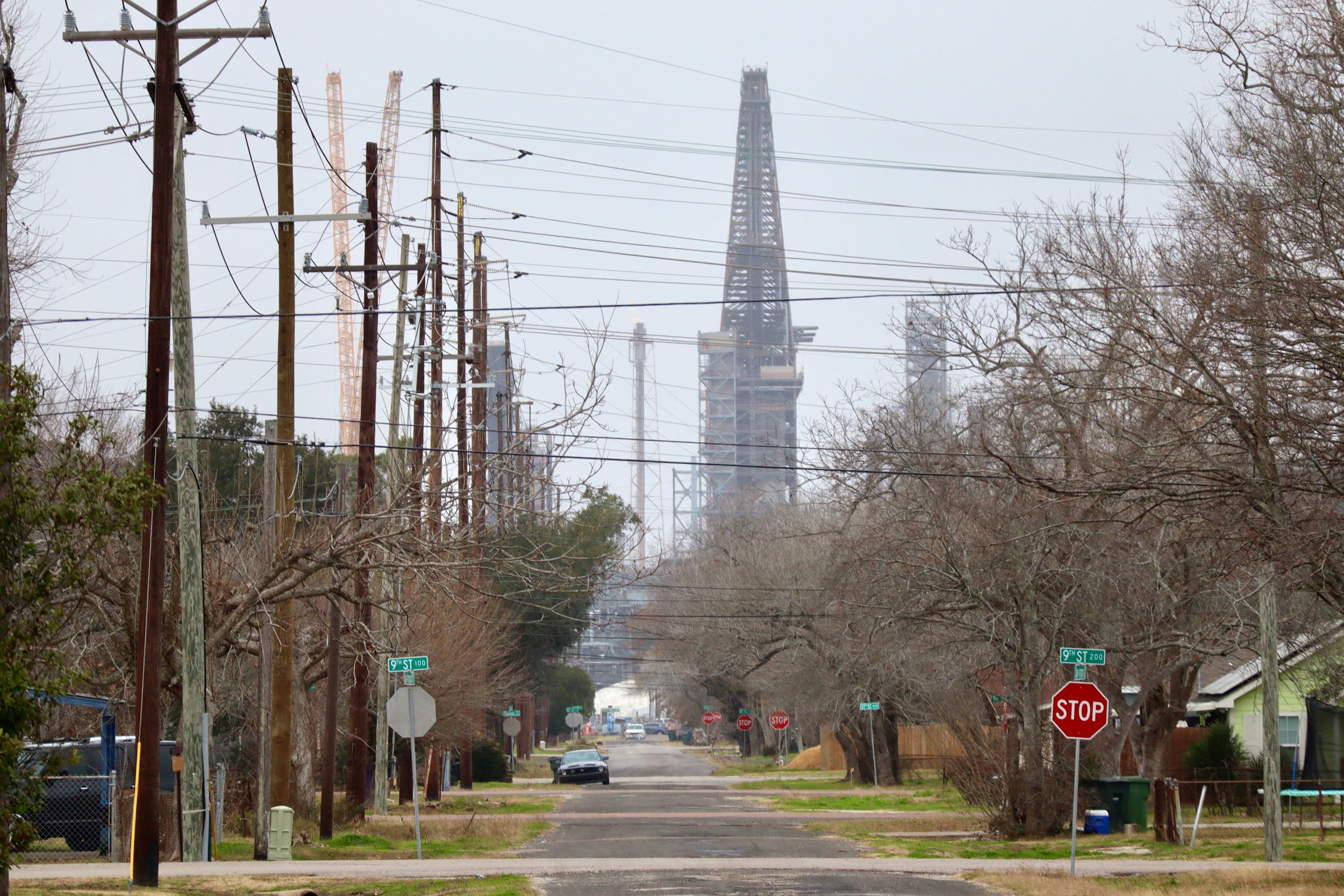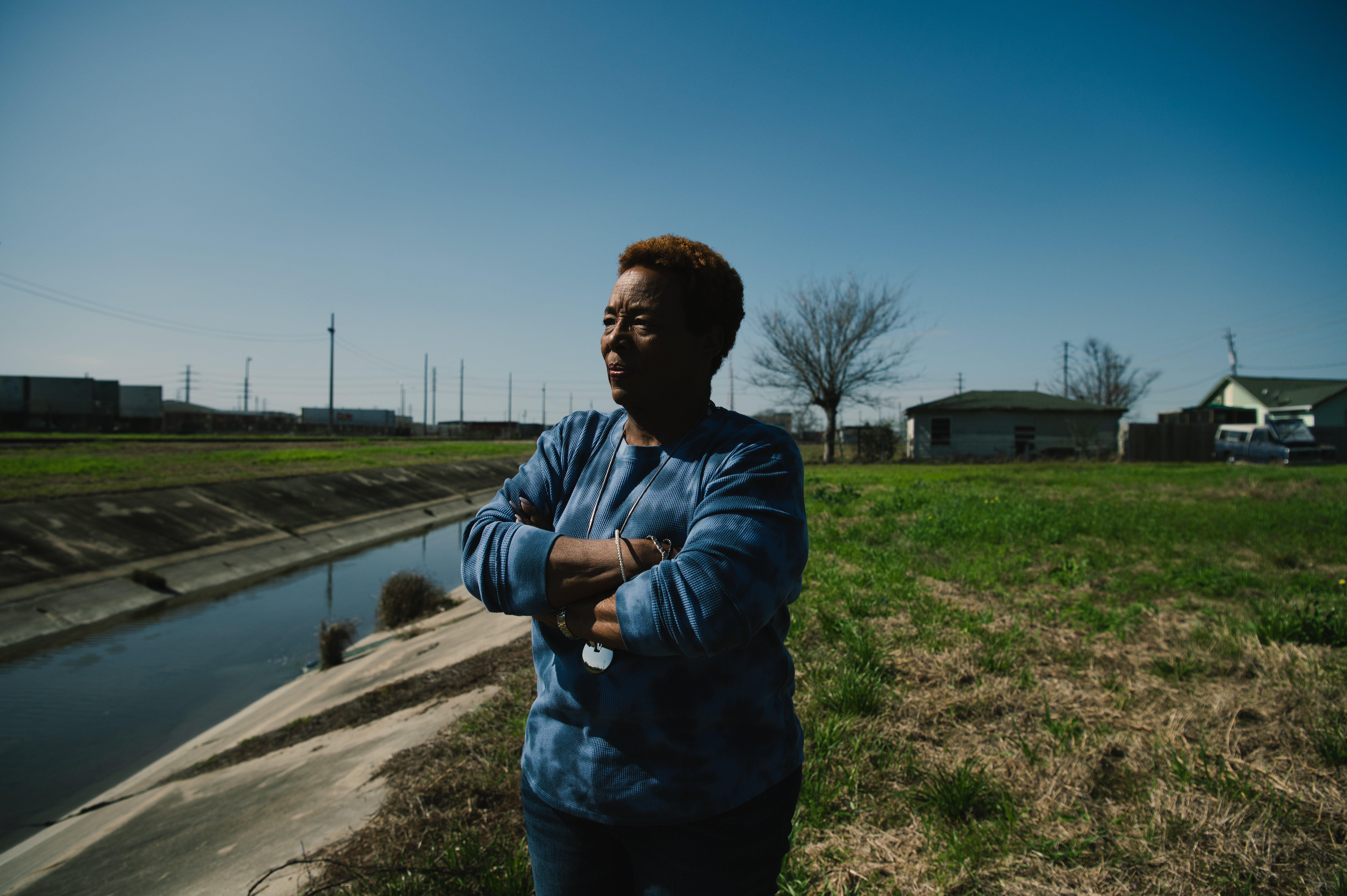
An Eleventh-Hour, Hail-Mary Climate Remedy
The Inflation Reduction Act promises to slash U.S. greenhouse gas emissions, but enables more pollution in Gulf Coast communities.

It’s another day on the Gulf Coast, and locals are fighting yet another fossil fuel infrastructure project. Texas billionaire Kelcy Warren’s company, Energy Transfer, has proposed a pipeline dubbed “Blue Marlin” that would carry crude oil from an export terminal in Nederland to an offshore port in Louisiana waters.
“This thing, given Energy Transfer’s track record, is a disaster waiting to happen,” said John Beard, a former Exxon Mobil employee and an environmental justice leader in Port Arthur, which is part of the same petrochemicals-dominated Golden Triangle area as Nederland. His city of 55,000 is already home to the country’s largest oil refinery, and the overall metropolitan area has a cancer rate 7 percent higher than the Texas average.
Pipelines owned by Energy Transfer, Sunoco, and its other subsidiaries and joint ventures spilled 3.6 million gallons of oil and hazardous fluids in 527 incidents between 2002 and 2017, according to government data, in what amounted to one spill every 11 days and an estimated $115 million in property damage.
“We don’t need the oil, so why are we transporting it and putting people at risk?” Beard asked.
The specter of never-ending fossil fuel expansion like the Blue Marlin pipeline and port has cast a pall over the brand-new Inflation Reduction Act. Signed into law last month, the act is the nation’s first major climate change legislation. It includes nearly $400 billion of investments in clean energy and efficiency, and cracks down on the exceptionally potent greenhouse gas methane.
According to the Department of Energy (DOE), the new law should cut the country’s greenhouse gas emissions in 2030 by 40 percent, compared to a 2005 baseline. If federal and state administrators successfully fit the bill’s many puzzle pieces together, the U.S. would approach the timeline of carbon cuts that the world’s climate scientists say is necessary to limit global warming to below 1.5 degrees Celsius—accepted by United Nations consensus as a threshold beyond which already-destructive climate impacts will get significantly worse.
According to the same climate scientists, Earth’s atmosphere can’t tolerate any new fossil fuel projects. But thanks to West Virginia Senator Joe Manchin’s devotion to the fossil fuel industry, the Inflation Reduction Act perversely ties its clean energy incentives to additional oil and gas leases. (Also due to Manchin, the law is being advertised as a package to reduce economic inflation.)
In other words, the new law is deeply contradictory. For that reason, environmental justice advocates like Beard are not embracing the reform. “It gives a pass for the fossil fuel industry,” he said.
Others see signs that the Inflation Reduction Act could topple fossil fuels from the throne of economic competitiveness, by creating financial incentives for cleaner and more efficient technologies to become more affordable and profitable.
“This [law] showers money on every form of clean energy,” said Daniel Cohan, an engineering professor at Rice University who studies energy and environmental policy.
Perhaps most importantly, the act expands federal tax credits for any technology generating zero-emissions electricity—including solar and wind farms, hydropower dams, geothermal and nuclear power plants, and energy storage facilities—making it easier for electric utilities and cooperatives to invest in clean options rather than fossil fuels. The act also offers individual households a tax credit for installing rooftop solar panels, subsidies for buying electric vehicles, and thousands of dollars in rebates for installing energy-efficient heat pumps.
These incentives represent a potential windfall for Texans and for Texas, which has big business in nearly every corner of the power sector, including the rapidly growing wind and solar industries, and manufacturing facilities like Tesla’s electric vehicle “Gigafactory” outside Austin.
Of course, Texas also has a plethora of oil and gas corporations looking to make their products more palatable. And the act “provides enormous subsidies for technologies that oil and gas companies might pivot to,” Cohan said.
One of those emerging technologies is hydrogen fuel, which theoretically should only release water as a byproduct when burned. But right now, most hydrogen fuel is made from natural gas in an energy-intensive process—making it an attractive pivot for gas companies.
The Inflation Reduction Act also pins some of its hopes on carbon capture technology—the part of the bill that worries Cohan the most. Carbon capture can involve removing carbon dioxide from the atmosphere, or more likely, from power plants and factories. Currently, one of the most common uses for captured carbon is enhanced oil recovery, a process where carbon is injected into old or less-productive wells to force more oil to the surface. The technique allows companies to squeeze as much oil and revenue from the earth as possible, essentially giving the fossil fuel industry a longer lease on life.
While many have criticized the auctions of new oil and gas leases mandated by the new law, Cohan said he’s more concerned about whether the carbon capture provisions will become so generous that they subsidize oil and gas production.
Notably, the law includes very little in the way of regulations and consequences for pollution, apart from a new fee on methane leaks from oil and gas facilities. That lack of teeth is why some who voted for the Inflation Reduction Act are calling it inadequate.
“We got just a portion of what was needed,” said Representative. Lloyd Doggett, a Democrat who represents Texas’ 35th district from San Antonio to Austin.
While he sees the law’s many clean energy and efficiency incentives as a good way to get more Americans engaged in fighting the climate crisis, Doggett doesn’t think incentives alone will cut greenhouse gas emissions fast enough.
He also doesn’t see a need for any of these incentives to go toward the oil and gas industry, saying, “We need to continue this effort to move away from fossil fuels and fossilized thinking.”
Doggett doesn’t expect further climate action to come from his colleagues in this Congress. Instead, he urges the administrative branch to now run with the law and quickly start the rule-making process, and for agencies to interpret the provisions on oil and gas leases as narrowly as possible. The congressman also called on President Joe Biden to declare a climate emergency, which would enable the president to wield much more power to direct federal resources toward containing the climate crisis.
“I think we do have a climate emergency, and [Biden] needs to exercise every authority within his power to respond to it. Because quite clearly, this Congress isn’t going to be doing anything more,” Doggett said.
Even with the Inflation Reduction Act’s inherent limitations, the Department of Energy projection that it will help the U.S. economy cut greenhouse gas emissions 40 percent by 2030 seems to hold up. There’s uncertainty in any model, especially when it comes to what choices businesses and consumers make in response to the new law’s incentives. But the DOE analysis is backed up by three independent studies with similar results, which built in some worst-case scenarios like a future collapse in oil and gas prices, or the U.S. not crafting any other climate policies.
“We hope those projections are real, and we hope that they can achieve those reductions,” said Robert Bullard, a professor at Texas Southern University who’s considered a founder of the American environmental justice movement.
The problem with this national overview, though, is that it doesn’t reveal which communities will benefit first, and which will be left waiting for cleaner air. It also doesn’t account for other pollutants from fossil fuel and petrochemical plants, like benzene or particulate matter, that harm people’s health in neighboring “fence-line” communities.
“As we lower the greenhouse gas emissions, we have to also think about lowering those other pollution emissions,” Bullard said. “And I think some of our communities want relief right now.”
Bullard thinks the bill can help on that front: Along with overall emissions reductions, it earmarks up to $60 billion specifically for environmental justice initiatives, including money to upgrade affordable housing, monitor pollution from industrial facilities, and clean up ports like the ones that litter the Gulf Coast.
One potential roadblock Bullard is worried about in Texas is whether state agencies, which will receive much of the federal funding, will distribute the money in a timely and equitable way—to big blue cities as well as to smaller red cities and rural areas.
“There’s no guarantee,” he said, and alluded to the example of disaster recovery funding.
The Texas General Land Office was recently the subject of a federal civil rights investigation for unfairly allocating aid money after Hurricane Harvey, and passing over Houston almost entirely. But now under the Biden administration, the Department of Justice has its eyes on Texas state agencies, Bullard said, and he hopes funding from the Inflation Reduction Act is distributed more equitably as a result.
In the meantime, he said grassroots organizations—like the groups his own Bullard Center for Environmental and Climate Justice works with—need to mobilize and educate their communities on what resources are available through the act, and to put pressure on city and county governments to apply for those resources. The new law also creates first-of-their-kind block grants for grassroots projects fighting local pollution and making their communities more resilient to extreme weather, something Bullard said is sorely needed.
Ultimately, what happens to fence-line communities in the coming years—whether the fossil fuel presence around them expands or contracts—is the hinge around which the IRA’s success will swing.
In Port Arthur, John Beard and other residents are waiting for federal regulators to issue a draft environmental impact statement for Energy Transfer’s proposed Blue Marlin pipeline. So far, the company and officials have not engaged much with community members, but Beard’s organization, the Port Arthur Community Action Network, plans to “ratchet up” its organizing.
As for the Inflation Reduction Act, he described the bill and the president “in typical Texas vernacular” as “all hat, no cattle.” Now that the act has passed, it’s up to Biden’s administration to implement the law in a way that will either prove Beard right or wrong.
Correction: This story has been edited to include the latest data from the Texas Cancer Registry. Previously, we stated that the cancer rate in Port Arthur is 11 percent higher than the state average. According to data for the most recent available year (2019), the cancer rate in the Beaumont-Port Arthur metropolitan statistical area is 7 percent higher than the state average.



